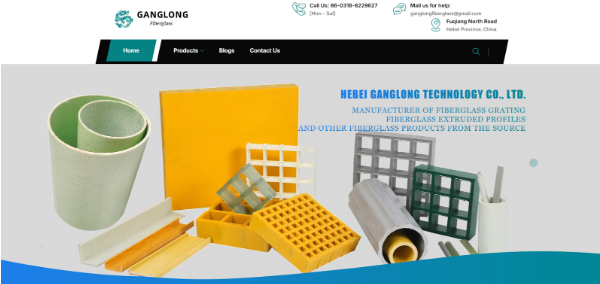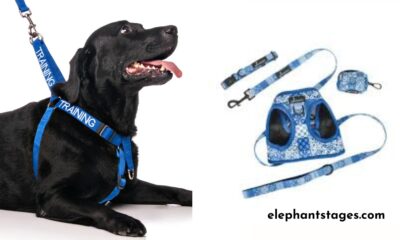Tech
Exploring Slip Ring Alternatives for Modern Applications

Slip rings are essential components in many applications, allowing the transmission of power and signals between rotating and stationary parts. However, traditional slip rings often face limitations such as wear and tear, signal interference, and inadequate performance in harsh environments. These issues can lead to increased maintenance costs and downtime. To address these challenges, custom slip rings have emerged as a superior alternative. Custom slip rings are designed to meet specific application requirements, offering enhanced durability, improved signal integrity, and tailored performance. By addressing the unique needs of each application, custom slip rings provide reliable solutions that overcome the limitations of traditional slip rings, ensuring optimal functionality and efficiency.
Criteria for Selecting Slip Ring Alternatives
When choosing slip ring alternatives, several critical factors must be considered to ensure the selected solution meets the specific needs of the application. These factors include electrical and mechanical performance, environmental compatibility, size and weight, installation and maintenance, and cost. Each of these criteria plays a vital role in determining the suitability and effectiveness of the slip ring alternative.
Electrical and Mechanical Performance
Electrical Performance
The primary function of slip rings and their alternatives is to facilitate the transmission of power and signals between rotating and stationary components. Therefore, the electrical performance of the alternative solution is paramount. Key aspects to consider include the voltage and current ratings, signal integrity, and the type of signals that need to be transmitted (e.g., analog, digital, high-frequency).
For instance, in applications requiring high-speed data transmission, such as Ethernet or fiber optic communication, ensuring minimal signal loss and electromagnetic interference (EMI) is crucial. Capsule slip rings, known for their compact design and reliable performance, can often be a viable alternative, especially when signal integrity and space constraints are significant concerns.
Mechanical Performance
Mechanical performance involves the physical characteristics and durability of the slip ring alternative. Factors such as rotational speed (RPM), torque, and mechanical wear should be evaluated. The selected solution must withstand the operational stresses without excessive wear, which could lead to frequent replacements or failures.
Additionally, materials used in the construction of the slip ring alternative should be chosen for their durability and compatibility with the specific application environment. High-quality materials ensure long-term reliability and reduce the need for maintenance.
Environmental Compatibility
Environmental conditions significantly impact the performance and longevity of slip ring alternatives. Key considerations include:
Temperature Range: The alternative must operate reliably within the expected temperature range. High-temperature applications may require solutions with specialized materials or cooling mechanisms.
Moisture and Dust Resistance: In environments where moisture, dust, or other contaminants are present, the slip ring alternative should have adequate protection. This can be indicated by an appropriate IP (Ingress Protection) rating.
Corrosion Resistance: For applications in harsh environments, such as marine or industrial settings, corrosion-resistant materials are essential to prevent degradation over time.
By ensuring environmental compatibility, the selected slip ring alternative can maintain its performance and reliability under varying conditions.
Size and Weight
Size and weight are crucial factors, particularly in applications with space constraints or weight limitations. For instance, in aerospace or medical devices, where every gram and millimeter counts, a compact and lightweight slip ring alternative is necessary.
Capsule slip rings are a popular choice in such scenarios due to their small form factor and ability to integrate seamlessly into confined spaces. Their design allows for efficient power and signal transmission without occupying excessive space or adding significant weight to the system.
Installation and Maintenance
Ease of installation and maintenance can significantly affect the overall cost and downtime of the system. When selecting a slip ring alternative, consider the following:
Installation Complexity: The alternative should be easy to install, ideally with minimal modifications to the existing system. Solutions that come with pre-configured connectors and standardized interfaces can simplify the installation process.
Maintenance Requirements: Low maintenance solutions are preferable, especially in applications where continuous operation is critical. The selected alternative should have a long service life and require minimal maintenance to ensure consistent performance.
By prioritizing ease of installation and low maintenance, the system’s overall efficiency and uptime can be improved.
Cost
Cost is always a significant consideration when selecting a slip ring alternative. However, it is essential to look beyond the initial purchase price and consider the total cost of ownership. This includes:
Initial Investment: The upfront cost of the slip ring alternative.
Operational Costs: Costs associated with power consumption, signal transmission efficiency, and potential energy savings.
Maintenance and Replacement Costs: Expenses related to maintenance, repairs, and eventual replacements.
Downtime Costs: Financial impact of system downtime due to maintenance or failures.
While custom solutions, such as capsule slip rings, may have a higher initial cost, their long-term benefits, including reliability, reduced maintenance, and operational efficiency, can result in significant cost savings over time. By evaluating the total cost of ownership, a more informed and economically sound decision can be made.
Selecting the right slip ring alternative involves a thorough analysis of electrical and mechanical performance, environmental compatibility, size and weight, installation and maintenance, and cost. By considering these factors, you can ensure that the chosen solution meets the specific needs of your application, providing reliable performance and long-term benefits. Capsule slip rings, with their compact design and robust performance, often emerge as an excellent alternative for various applications, offering a balanced combination of efficiency, reliability, and cost-effectiveness.
Types of Slip Ring Alternatives
Selecting the right slip ring alternative involves understanding the various technologies available, each suited to different applications and requirements. Here, we explore the major categories of slip ring alternatives, including wireless transmission technologies, optical transmission technologies, and mechanical alternatives. Each type offers unique benefits and is suitable for specific use cases, providing options to meet the diverse needs of modern industries.
Wireless Transmission Technologies
Inductive Coupling
Inductive coupling is another popular wireless transmission technology. It works by transferring electrical power through magnetic fields between stationary and rotating components. This method eliminates the need for physical contact, which reduces friction and mechanical wear. Inductive coupling is ideal for applications requiring high reliability and minimal maintenance, such as industrial automation and robotics. Its ability to provide continuous power transfer without physical connections makes it a versatile alternative to traditional slip rings.
RF Communication
Radio Frequency (RF) communication involves the wireless transmission of data using radio waves. This technology is commonly used in applications where high-speed data transfer is essential, such as in telemetry systems and remote monitoring devices. RF communication systems can transmit data over long distances without the need for physical connections, making them suitable for dynamic and mobile applications. They are particularly effective in environments where traditional slip rings might struggle with signal interference and degradation.
Bluetooth
Bluetooth technology offers a wireless solution for transmitting data over short distances. It is widely used in consumer electronics, such as headphones and mobile devices, but also has industrial applications. Bluetooth slip ring alternatives are useful in scenarios where compactness and ease of integration are crucial. They provide a cost-effective solution for short-range wireless communication, ideal for small-scale industrial applications or portable equipment.
Wi-Fi
Wi-Fi technology provides a robust and flexible wireless transmission method suitable for various applications. It allows for high-speed data transfer over relatively long distances, making it ideal for networked devices and smart systems. Wi-Fi slip ring alternatives are particularly advantageous in environments that require extensive data communication, such as smart factories and IoT-enabled systems. The ability to integrate seamlessly with existing wireless networks makes Wi-Fi a versatile and scalable option.
Optical Transmission Technologies
Fiber Optic Rotary Joints
Fiber optic rotary joints (FORJs) are a leading optical transmission technology used as slip ring alternatives. They enable the transmission of data and signals through light, providing high-speed and high-fidelity communication. FORJs are essential in applications requiring minimal signal loss and maximum data integrity, such as in telecommunications and medical imaging. Their ability to handle high bandwidth makes them suitable for transmitting large volumes of data quickly and accurately. Additionally, FORJs are immune to electromagnetic interference, making them ideal for environments with high electrical noise.
Mechanical Alternatives
Brushless Slip Rings
Brushless slip rings are mechanical alternatives that use magnetic fields to transmit electrical signals and power without direct contact. This design eliminates the traditional brushes and contacts found in standard slip rings, reducing wear and maintenance needs. Brushless slip rings are highly reliable and durable, making them suitable for applications that require continuous operation and minimal downtime, such as in wind turbines and heavy machinery. Their robust construction ensures long-term performance even in harsh conditions.
Electric Swivels
Electric swivels, also known as rotary joints, provide a mechanical solution for transmitting electrical power and signals through a rotating interface. They use a combination of precision bearings and slip ring technology to ensure smooth and reliable transmission. Electric swivels are versatile and can be customized to meet specific application needs. They are commonly used in cranes, construction equipment, and rotating platforms where robust and reliable electrical connections are required.
Gas and Liquid Rotary Unions
Gas and liquid rotary unions are specialized mechanical alternatives designed to transfer fluids (gas or liquid) between stationary and rotating parts. They are commonly used in applications such as hydraulic systems, pneumatic systems, and cooling systems. These rotary unions ensure a leak-free and reliable connection, which is critical for maintaining system integrity and performance. By providing a continuous fluid transfer, they support the efficient operation of machinery and equipment in various industries, from manufacturing to aerospace.
Understanding the different types of slip ring alternatives is crucial for selecting the right solution for your specific application. Wireless transmission technologies like inductive coupling, RF communication, Bluetooth, and Wi-Fi offer various benefits, including reduced maintenance and enhanced reliability. Optical transmission technologies, such as fiber optic rotary joints, provide high-speed and high-fidelity data transmission, ideal for applications requiring minimal signal loss. Mechanical alternatives, including brushless slip rings, electric swivels, and gas and liquid rotary unions, offer robust and durable solutions for a range of industrial needs.
For applications requiring high-speed data transmission, ethernet slip rings are an excellent choice. They ensure reliable and efficient communication, essential for maintaining the performance and integrity of networked systems. By considering the unique requirements of your application and the strengths of each slip ring alternative, you can ensure optimal performance, reliability, and cost-effectiveness.
Real-World Applications and Case Studies
Slip ring alternatives have found their way into a variety of industries, proving their efficacy in enhancing performance, reliability, and efficiency. This section delves into real-world applications and case studies, illustrating how these alternatives are being utilized in diverse sectors such as offshore wind turbines, industrial automation, medical equipment, and more.
Offshore Wind Turbines
Case Study: Inductive Coupling in Offshore Wind Turbines
Offshore wind turbines are subjected to harsh environmental conditions, including saltwater corrosion, high winds, and constant rotation. Traditional slip rings in these turbines often face issues such as wear and tear, leading to frequent maintenance and downtime. To address these challenges, inductive coupling has been implemented as an alternative.
Implementation and Benefits:
Inductive coupling transmits power and signals through magnetic fields, eliminating physical contact between rotating and stationary parts. This technology is particularly advantageous in offshore wind turbines where reliability and minimal maintenance are critical. The absence of physical contact reduces wear, extending the lifespan of the components. Moreover, inductive coupling systems are sealed and protected from harsh environmental elements, ensuring continuous operation and reducing the need for maintenance.
The use of inductive coupling in offshore wind turbines has resulted in significant reductions in maintenance costs and downtime, enhancing overall efficiency and energy output. This case study demonstrates the potential of slip ring alternatives to improve the performance and reliability of renewable energy systems.
Industrial Automation
Case Study: RF Communication in Robotic Arms
In industrial automation, robotic arms are essential for tasks such as assembly, welding, and material handling. These arms require reliable transmission of power and control signals to operate efficiently. Traditional slip rings often encounter issues with signal interference and mechanical wear, leading to operational inefficiencies.
Implementation and Benefits:
RF communication has emerged as a viable slip ring alternative for robotic arms. This wireless technology transmits control signals through radio waves, ensuring high-speed and interference-free communication. The elimination of physical contacts reduces wear and maintenance needs, enhancing the reliability of robotic systems.
In a leading automotive manufacturing plant, the implementation of RF communication in robotic arms has significantly improved production efficiency. The wireless system ensures seamless and accurate control of robotic movements, reducing errors and enhancing productivity. Additionally, the reduced maintenance requirements have led to lower operational costs and increased uptime.
Medical Equipment
Case Study: Fiber Optic Rotary Joints in MRI Machines
Medical imaging equipment, such as MRI machines, requires the transmission of high-resolution data between rotating and stationary parts. Traditional slip rings can introduce noise and signal loss, compromising the quality of medical images. To overcome these challenges, fiber optic rotary joints (FORJs) have been adopted.
Implementation and Benefits:
FORJs transmit data through light, ensuring high-speed and high-fidelity communication. This optical transmission technology is immune to electromagnetic interference, making it ideal for medical applications where precision and accuracy are paramount.
In a leading hospital, the use of FORJs in MRI machines has enhanced the clarity and resolution of medical images. The optical transmission ensures minimal signal loss and noise, providing doctors with accurate diagnostic information. Moreover, the durability of FORJs reduces the frequency of maintenance, ensuring the MRI machines are available for use with minimal downtime.
Surveillance Systems
Case Study: Wi-Fi Slip Ring Alternatives in Surveillance Cameras
Surveillance systems, especially those used in critical infrastructure and security, require continuous and reliable operation. Traditional slip rings in surveillance cameras can wear out over time, leading to maintenance issues and potential security risks.
Implementation and Benefits:
Wi-Fi technology has been implemented as a slip ring alternative in surveillance cameras. This wireless solution enables the transmission of video and control signals without the need for physical contact. Wi-Fi slip ring alternatives offer high-speed data transfer and easy integration with existing network infrastructure.
In a major metropolitan area, the deployment of Wi-Fi-enabled surveillance cameras has enhanced security monitoring. The wireless system ensures uninterrupted video transmission, providing real-time surveillance without the risk of mechanical failure. The ease of installation and maintenance has further reduced operational costs, making it a cost-effective solution for large-scale security systems.
Aerospace and Defense
Case Study: Brushless Slip Rings in Defense Radar Systems
Defense radar systems require robust and reliable slip ring alternatives to ensure uninterrupted operation. Traditional slip rings in these systems can suffer from wear and tear, leading to potential failures in critical situations.
Implementation and Benefits:
Brushless slip rings have been employed in defense radar systems to address these challenges. These mechanical alternatives use magnetic fields to transmit electrical signals and power without direct contact, reducing wear and increasing reliability.
In a defense project, the integration of brushless slip rings in radar systems has improved their operational reliability. The reduction in mechanical wear has extended the lifespan of the components, ensuring continuous and accurate radar performance. This has enhanced the overall effectiveness of defense operations, providing reliable surveillance and tracking capabilities.
These real-world applications and case studies highlight the versatility and effectiveness of slip ring alternatives in various industries. Whether it is enhancing the reliability of offshore wind turbines, improving the efficiency of industrial automation, ensuring the precision of medical imaging equipment, or securing surveillance systems, slip ring alternatives such as inductive coupling, RF communication, fiber optic rotary joints, and Wi-Fi technologies offer significant benefits. These alternatives address the limitations of traditional slip rings, providing enhanced performance, reduced maintenance, and improved operational efficiency.
Addressing Common Concerns
Implementing slip ring alternatives comes with its set of user concerns, from reliability and performance to cost and compatibility with existing systems. Addressing these concerns is crucial to ensure a smooth transition and optimal performance. This section delves into common user concerns about slip ring alternatives and provides practical tips for evaluating and choosing the right alternative.
User Concerns About Implementing Slip Ring Alternatives
1. Reliability and Durability
One of the primary concerns users have about slip ring alternatives is their reliability and durability compared to traditional slip rings. Users worry that new technologies might not withstand the rigorous demands of their specific applications, particularly in harsh environments.
2. Signal Integrity and Performance
Maintaining signal integrity during the transmission of power and data is crucial. Users are concerned that slip ring alternatives might introduce noise, signal loss, or interference, affecting the performance of their systems. This concern is especially pertinent in applications requiring high-speed data transmission, such as ethernet slip rings.
3. Cost and Return on Investment (ROI)
The initial cost of implementing slip ring alternatives can be higher than traditional slip rings. Users are often concerned about the return on investment and whether the long-term benefits justify the upfront expenses. The cost of additional infrastructure, such as new connectors or interfaces, also contributes to these concerns.
4. Compatibility with Existing Systems
Users need to ensure that slip ring alternatives are compatible with their existing systems and infrastructure. Concerns arise about the ease of integration, potential need for significant modifications, and the ability to maintain or improve current performance levels.
5. Maintenance and Operational Efficiency
While one of the benefits of slip ring alternatives is reduced maintenance, users are concerned about the practicality of this claim. They worry about the actual maintenance requirements and the availability of support and spare parts.
Practical Tips for Evaluating and Choosing the Right Alternative
1. Assess Your Application Needs
Before selecting a slip ring alternative, thoroughly assess your specific application needs. Consider the operational environment, required electrical and mechanical performance, and any specific challenges your application faces. This will help narrow down the most suitable technologies.
2. Evaluate Technical Specifications
Carefully evaluate the technical specifications of potential slip ring alternatives. Look for options that meet or exceed the performance of traditional slip rings. Key specifications to consider include:
Electrical Performance: Voltage and current ratings, signal types (analog, digital, high-frequency), and data transmission capabilities.
Mechanical Performance: Rotational speed (RPM), torque, and material durability.
Environmental Compatibility: Temperature range, moisture and dust resistance, and corrosion protection.
3. Consider Long-Term Costs and ROI
While the initial cost is an important factor, consider the total cost of ownership, including maintenance, downtime, and operational efficiency. Calculate the potential return on investment by comparing the long-term benefits of reduced maintenance and improved performance with the upfront costs.
4. Verify Compatibility and Integration
Ensure that the slip ring alternative is compatible with your existing systems. Check for standardization in connectors, interfaces, and communication protocols. If significant modifications are needed, assess whether the benefits outweigh the integration efforts.
5. Prioritize Reliability and Proven Performance
Select slip ring alternatives with a proven track record of reliability and performance in similar applications. Look for case studies, user reviews, and testimonials that demonstrate the success of the technology in real-world scenarios.
6. Test and Validate
Before full-scale implementation, conduct thorough testing and validation of the selected slip ring alternative. This includes:
Prototype Testing: Develop and test prototypes to evaluate performance under actual operating conditions.
Pilot Projects: Implement pilot projects to gain practical insights and address any issues before large-scale deployment.
Ongoing Monitoring: Continuously monitor the performance of the slip ring alternative post-implementation to ensure it meets expectations.
7. Plan for Maintenance and Support
Even though slip ring alternatives typically require less maintenance, it is crucial to have a maintenance plan in place. Ensure that spare parts are readily available and that technical support is accessible. Regularly scheduled maintenance checks can prevent unexpected downtimes and prolong the lifespan of the system.
8. Engage with Trusted Suppliers
Work with trusted suppliers who have a deep understanding of slip ring technologies and alternatives. Suppliers with a strong track record can provide valuable insights, support, and assurance of quality.
9. Stay Informed About Technological Advances
Slip ring alternatives are continually evolving with technological advancements. Stay informed about the latest developments in the field to ensure you are using the most efficient and reliable technology available.
Addressing common concerns about implementing slip ring alternatives involves a thorough understanding of the specific needs and challenges of your application. By carefully evaluating technical specifications, ensuring compatibility, and considering long-term costs and reliability, you can make an informed decision. Practical steps such as testing, validating, and planning for maintenance will further ensure the successful integration of slip ring alternatives. Whether you are considering inductive coupling, RF communication, fiber optic rotary joints, or other advanced technologies, these guidelines will help you select the best solution for enhanced performance and operational efficiency.
Tech
Environmental Benefits of Chopped Strand Mat

Key Benefits
As industries increasingly focus on sustainability, the environmental impact of materials used in manufacturing processes has become a critical consideration. Chopped Strand Mat (CSM) is no exception, and its environmental benefits, including recyclability and eco-friendly properties, are essential for its growing adoption in sectors such as automotive, marine, construction, and renewable energy. When compared to other traditional materials, CSM stands out for several key reasons, from its durability and lower environmental footprint during production to its potential for recycling and reuse. This article explores the environmental benefits of CSM and how it contributes to more sustainable manufacturing practices.
Recyclability of Chopped Strand Mat
One of the primary environmental advantages of Chopped Strand Mat (CSM) is its potential for recycling. While fiberglass, including CSM, is often considered difficult to recycle due to its complex composite nature, advancements in recycling technologies are making it increasingly feasible. The ability to recycle CSM not only contributes to reducing waste but also supports the growing demand for sustainable materials across various industries, including the production of cable ladder.
Cable ladder, which are widely used in electrical and communication systems to support and organize cables, can also benefit from the recyclability of CSM. Traditionally, cable ladders were made from metals like steel or aluminum, which required energy-intensive processes to manufacture and were subject to corrosion. However, with the shift toward fiberglass-based composites such as CSM, the potential for recycling these products at the end of their life cycle has increased.
- Mechanical Recycling: CSM, like other fiberglass-based products, can be processed through mechanical recycling methods. This involves breaking down the fiberglass composite into its individual components, such as glass fibers and resins, which can then be reused. Mechanical recycling of CSM typically results in the glass fibers being cleaned, repurposed, and used in the production of new composite materials, which helps reduce the need for virgin raw materials.
- Chemical Recycling: A more advanced form of recycling, chemical recycling involves breaking down the resin binder used in CSM into its chemical components, which can then be reused in the creation of new products. This process helps minimize waste and can significantly reduce the environmental impact of production, especially when the resin is derived from renewable sources.
- Circular Economy: The recyclability of CSM is in alignment with the principles of a circular economy, where materials are continuously reused, reducing the need for landfilling and conserving natural resources. As industries adopt more circular practices, the ability to recycle materials like CSM becomes an increasingly important factor in its sustainability.
Reduction in Material Waste
The manufacturing process of CSM generates minimal waste compared to many other traditional materials. The fibers used in CSM are carefully controlled during the cutting process, and excess materials can often be reused, either in the same production cycle or in the creation of other fiberglass products. This reduces the overall material waste and ensures a more efficient use of raw materials.
- Zero Waste Initiatives: Many manufacturers of fiberglass products, including CSM, have adopted zero-waste initiatives to further minimize environmental impact. This includes reusing offcuts and defective mats during the production process or sending waste materials to specialized facilities for recycling. By reducing waste at every step of the manufacturing cycle, CSM helps support environmentally responsible manufacturing.
Energy Efficiency and Reduced Carbon Footprint
The production of Chopped Strand Mat is energy-intensive but generally more efficient than the manufacturing of many other materials, particularly metals like steel or aluminum. CSM is primarily made from glass fibers, which are derived from sand and other natural resources. The energy required to produce glass fibers and process them into CSM is relatively low compared to the extraction and processing of metals, making CSM a more energy-efficient alternative in certain applications.
- Lower Embodied Carbon: The energy required to produce fiberglass products such as CSM is significantly lower than that for materials like aluminum or steel, which require high-temperature furnaces for production. This results in a lower embodied carbon, making CSM a more sustainable choice in industries focused on reducing carbon emissions.
- Durability and Longevity: CSM products are incredibly durable and resistant to environmental factors like moisture, UV radiation, and temperature changes. This long lifespan reduces the need for frequent replacements, which in turn lowers the overall carbon footprint associated with manufacturing, transportation, and disposal. For example, CSM is often used in the construction of boat hulls and automotive parts, both of which are subject to demanding conditions. The longevity of these materials means that fewer resources are consumed over time.
Non-toxic and Low Environmental Impact
Fiberglass, the core material used in Chopped Strand Mat, is non-toxic and does not release harmful substances into the environment during its manufacturing or use. Unlike some synthetic polymers and resins, which may contain harmful chemicals or release volatile organic compounds (VOCs), fiberglass is inherently safer for both human health and the environment.
- Safer for Workers: The production of fiberglass products like CSM does not involve the same hazardous chemicals that are found in many other composite materials. This reduces the risk of exposure to harmful substances for workers in the manufacturing process, contributing to a safer and more sustainable working environment.
- Low VOC Emissions: Many types of resins used in composite materials release volatile organic compounds (VOCs) during the curing process, contributing to air pollution. However, many CSM manufacturers are increasingly using low-VOC or VOC-free resins, making the production of CSM more eco-friendly. These advances reduce the environmental footprint and make the manufacturing process safer for both workers and the surrounding environment.
Lightweight Properties Leading to Reduced Energy Consumption
Chopped Strand Mat is lightweight compared to traditional building materials like metals or concrete. This characteristic has several environmental advantages, particularly in industries such as transportation and construction. For example:
- Automotive Applications: In the automotive industry, lighter materials lead to improved fuel efficiency and reduced carbon emissions. The use of CSM in vehicle manufacturing can help reduce the weight of cars, trucks, and other vehicles, ultimately contributing to lower fuel consumption and a smaller carbon footprint.
- Marine and Aerospace: Similarly, in marine and aerospace industries, the use of lightweight fiberglass materials like CSM helps reduce the energy required to propel boats and aircraft. This leads to less fuel consumption and reduced environmental impact during operation.
- Cable Ladders and Fiberglass Sheets: In both cable ladder systems and fiberglass sheets, the use of non-toxic materials ensures that no harmful emissions are released during production or usage. This is especially important in industries where worker safety and environmental health are top priorities, such as in the construction of electrical infrastructure or building facades.
Biodegradable and Natural Fiber Alternatives
While CSM itself is not biodegradable, it can be combined with natural fiber alternatives to improve its eco-friendly properties. For example, manufacturers are exploring the combination of CSM with bio-based resins or natural fibers like hemp, flax, or jute. This hybrid approach can result in products that are more biodegradable or have reduced environmental impact at the end of their lifecycle.
- Bio-composites: The development of bio-composites using natural fibers and bio-resins is an emerging trend in the CSM market. These bio-composites are designed to be more sustainable, offering a more eco-friendly alternative to traditional fiberglass composites. Such advancements contribute to a more sustainable lifecycle for CSM products.
Tech
The Growing Market for Audio Jammers

The Market Dynamics of Audio Jammers and Their Evolving Role
The market for audio jammers is experiencing steady growth due to increasing concerns about privacy, security, and surveillance. These devices, designed to disrupt unwanted audio signals, are gaining traction across a wide range of industries, including corporate, government, military, and personal privacy. As surveillance technology continues to advance, the market for audio jammers is expanding, with additional innovations such as Drone Jammer Gun and Drone RF Detection contributing to a more sophisticated approach to counter-surveillance.
Key Drivers of Market Growth
Rising Privacy Concerns
With the growing prevalence of surveillance technologies, including hidden microphones and audio-recording devices, the demand for audio jammers has increased. Individuals and organizations are increasingly concerned about unauthorized eavesdropping, particularly in environments where sensitive or confidential information is exchanged. This has driven the adoption of audio jammers in sectors such as corporate boardrooms, legal offices, and government facilities, where protecting information from external threats is paramount.
Increased Use of Surveillance Technology
The proliferation of consumer and professional surveillance devices, such as hidden microphones, drones with audio capabilities, and remote listening systems, has expanded the market for audio jammers. As more people and organizations become aware of the potential risks posed by surveillance technology, the need for countermeasures like audio jammers is rising.
Government and Defense Applications
Government agencies and defense contractors have been major adopters of audio jammers to protect against espionage and cyber-attacks. These sectors require robust security measures to safeguard sensitive information and prevent unauthorized interception of communications. Audio jammers are also used by military and intelligence agencies in the field to thwart enemy surveillance and maintain operational security.
Growing Security Concerns in Business and Personal Privacy
In addition to the government and defense sectors, businesses, especially those involved in intellectual property (IP) and confidential dealings, are adopting audio jammers to protect their trade secrets. High-profile industries, such as technology, pharmaceuticals, and finance, are increasingly concerned about information leaks, leading to greater demand for privacy-enhancing tools. In personal privacy, individuals concerned about eavesdropping, such as in their homes or personal spaces, are also contributing to market growth.
Key Applications of Audio Jammers
Corporate and Legal Sectors
In the corporate world, audio jammers are primarily used in boardrooms, meeting spaces, and executive offices where confidential discussions take place. These devices help prevent unauthorized audio recording and eavesdropping. Legal professionals, especially those handling sensitive client cases or confidential legal documents, also use audio jammers to ensure their conversations remain private and secure.
Government and Military
Government agencies and military personnel utilize audio jammers as part of their security protocol. These devices are particularly important for preventing espionage and surveillance during high-level diplomatic talks, intelligence operations, and defense missions. Audio jammers are used in embassies, government offices, and military installations to maintain confidentiality and operational security.
Personal Privacy
With the increasing concern about personal privacy, individuals are increasingly investing in audio jammers for their homes or vehicles. These devices are used to block any potential surveillance from hidden microphones or listening devices, providing individuals with peace of mind in their personal spaces. Additionally, individuals who are subject to unwanted attention, such as public figures or whistleblowers, may use audio jammers to protect their privacy.
Events and Conferences
At high-profile events, such as business conferences, product launches, or political summits, the use of audio jammers has become more common. These events often attract journalists, competitors, or other parties who may attempt to intercept sensitive discussions or gain access to proprietary information. Audio jammers are employed in such settings to safeguard against unauthorized recording and eavesdropping.
Challenges in the Audio Jammer Market
Legal and Regulatory Issues
One of the significant challenges facing the audio jammer market is the complex legal landscape. The use of audio jammers is heavily regulated in many countries, and in some places, it is outright illegal to use them, particularly in public spaces or areas with critical communications infrastructure. The risk of fines or legal penalties for using jammers in unauthorized locations can deter potential users and create barriers to market growth. The legal framework surrounding audio jammers varies widely across regions, so users must be aware of local regulations to avoid violations.
Health and Safety Concerns
Another challenge with audio jammers, especially those operating at ultrasonic frequencies, is the potential health risks they pose. Prolonged exposure to high-frequency sounds can cause discomfort or even hearing damage, particularly for sensitive individuals or animals. Some audio jammers can also interfere with medical devices, such as hearing aids or implantable devices, raising concerns about their safe usage in environments where vulnerable individuals may be present.
Technological Limitations
While audio jammers are effective in many scenarios, they are not foolproof. Advanced surveillance technologies, such as those using encrypted communications or spread-spectrum techniques, can sometimes bypass traditional jamming methods. Similarly, Drone RF Detection and Drone Jammer Gun may struggle with more sophisticated drones that use advanced communication protocols or operate at high altitudes. Continuous innovation is required to improve the effectiveness of these devices and address evolving surveillance technologies.
Consumer Awareness and Adoption
Despite the growing concern about privacy, there remains a lack of widespread awareness about audio jammers and their effectiveness. Many consumers and businesses are unaware of the options available to protect themselves from audio surveillance. Educational efforts and greater visibility of the benefits of audio jammers are necessary to accelerate adoption in both the consumer and enterprise markets.
Future Outlook for the Audio Jammer Market
The future of the audio jammer market looks promising as privacy concerns continue to grow across both personal and professional domains. As the technology behind audio jammers improves, and as more people become aware of the need to protect their conversations, the demand for these devices is expected to rise.
The integration of advanced technologies like Drone Jammer Guns and RF Detection Systems with audio jammers could further enhance their effectiveness, enabling users to protect against both physical and digital surveillance. With the increasing risk of cyber threats and data breaches, the need for robust counter-surveillance tools will likely drive further innovation in the audio jammer market.
Furthermore, as regulatory bodies adjust their stance on the use of jamming devices, more balanced and standardized regulations may emerge, which could help drive growth in the market by allowing greater usage in controlled environments.
Tech
Top Technology Trends in Accounting and Financial Services

Accounting and financial services are transforming with the rise of new technologies. Three significant trends are shaping this change. First, artificial intelligence is becoming a game changer. It streamlines processes, reduces errors, and boosts efficiency. Second, blockchain technology is gaining traction. It offers transparency and security in transactions, which is invaluable. Lastly, cloud-based solutions are making data access and collaboration easier than ever. Businesses like Padgett Business Services are leveraging these innovations to enhance their offerings. They are not alone in recognizing the potential. Many financial institutions are already integrating these technologies. This shift does not just mean quicker services. It also means more accurate and reliable outcomes. Understanding these trends is essential for staying competitive. They are not just fleeting changes. These are foundational shifts that will continue to reshape how accounting and financial services operate. Embracing them can pave the way for sustained growth and improved service delivery.
Artificial Intelligence in Accounting
Artificial intelligence (AI) is revolutionizing accounting. It automates repetitive tasks like data entry and categorization. This frees up accountants to focus on more strategic activities. AI can also analyze large volumes of data quickly. This leads to better decision-making based on accurate insights. Moreover, AI helps in detecting anomalies and potential fraud. It constantly monitors transactions and flags unusual patterns.
A simple example of AI in action is automated bookkeeping. Systems can now learn from transaction history. They predict and apply the correct account codes, reducing manual intervention. AI-powered chatbots are also common. They assist with customer inquiries, providing instant responses and improving customer satisfaction.
Blockchain Technology’s Impact
Blockchain is another vital trend. It creates a secure and transparent ledger of transactions. This is crucial for financial services, where trust and accuracy are paramount. Blockchain reduces the risk of errors and fraud. Once a transaction is recorded, it cannot be altered. This feature makes auditing simpler and more reliable.
For example, consider cross-border payments. Traditional methods can take days, but blockchain provides near-instantaneous transfers. This speed benefits both individuals and businesses. They enjoy reduced costs and improved cash flow.
According to the Federal Reserve, blockchain has the potential to improve the efficiency of payment systems. It is not yet widely adopted, but its advantages are clear. Gradually, more institutions are exploring its use in various applications beyond payments.
The Rise of Cloud-Based Solutions
Cloud computing is changing how accounting services are delivered. It offers several benefits over traditional methods. First, it allows real-time access to financial data from anywhere. This flexibility is essential in today’s fast-paced world. Second, cloud solutions enable seamless collaboration. Teams can work on the same documents simultaneously, improving efficiency.
Security is often a concern with cloud solutions. However, providers invest heavily in ensuring data protection. Features like encryption and multi-factor authentication safeguard sensitive information.
A popular application of cloud technology is accounting software. Solutions like QuickBooks Online and Xero offer cloud-based services. They eliminate the need for physical servers and regular software updates. These platforms also integrate with various apps, providing a comprehensive financial management ecosystem.
Comparison Table: Traditional vs. Modern Accounting Technologies
| Aspect | Traditional Accounting | Modern Accounting Technologies |
| Data Entry | Manual | Automated with AI |
| Data Access | Location-bound | Cloud-based, accessible from anywhere |
| Transaction Security | Centralized | Blockchain-enhanced |
| Collaboration | On-site | Online, real-time |
| Error Detection | Manual audits | AI-driven monitoring |
Future Outlook
The integration of these technologies is just the beginning. As they evolve, they will further transform the landscape. Staying informed on developments is crucial. For instance, the National Institute of Standards and Technology regularly updates its guidelines on cybersecurity, which is vital as more operations move online.
Innovation in accounting and finance is not slowing down. Technologies like machine learning and predictive analytics are on the horizon. They promise even greater advancements. Businesses that stay ahead of these trends will not only survive but thrive in this dynamic environment.
-

 Home Improvement6 months ago
Home Improvement6 months agoEssential Drain Cleaning Tips for Brampton Residents
-

 Fashion11 months ago
Fashion11 months agoAttractive Beach Dresses: Elevate Your Look with These Ideas
-

 Entertainment10 months ago
Entertainment10 months agoNetnaija: Your One-Stop Shop for Free Movies in Africa
-

 Pets10 months ago
Pets10 months agoPawsitively Perfect: The Types of Dog Harness Bundle for Your Furry Friend
-

 News10 months ago
News10 months agoWhat Are the Biggest Challenges in Marine Construction Projects in Australia?
-

 Health11 months ago
Health11 months agoUnderstanding Ftmç: Gender-Affirming Surgery
-

 Business11 months ago
Business11 months agoHow Professional Concrete Cleaning Wins Repeat Business
-

 Entertainment12 months ago
Entertainment12 months agoUnlocking Cinematic Pleasures: A Comprehensive Look at Rebahin, the Free Movie Streaming Haven
















